This post may contain affiliate links that at no additional cost to you, I may earn a small commission.
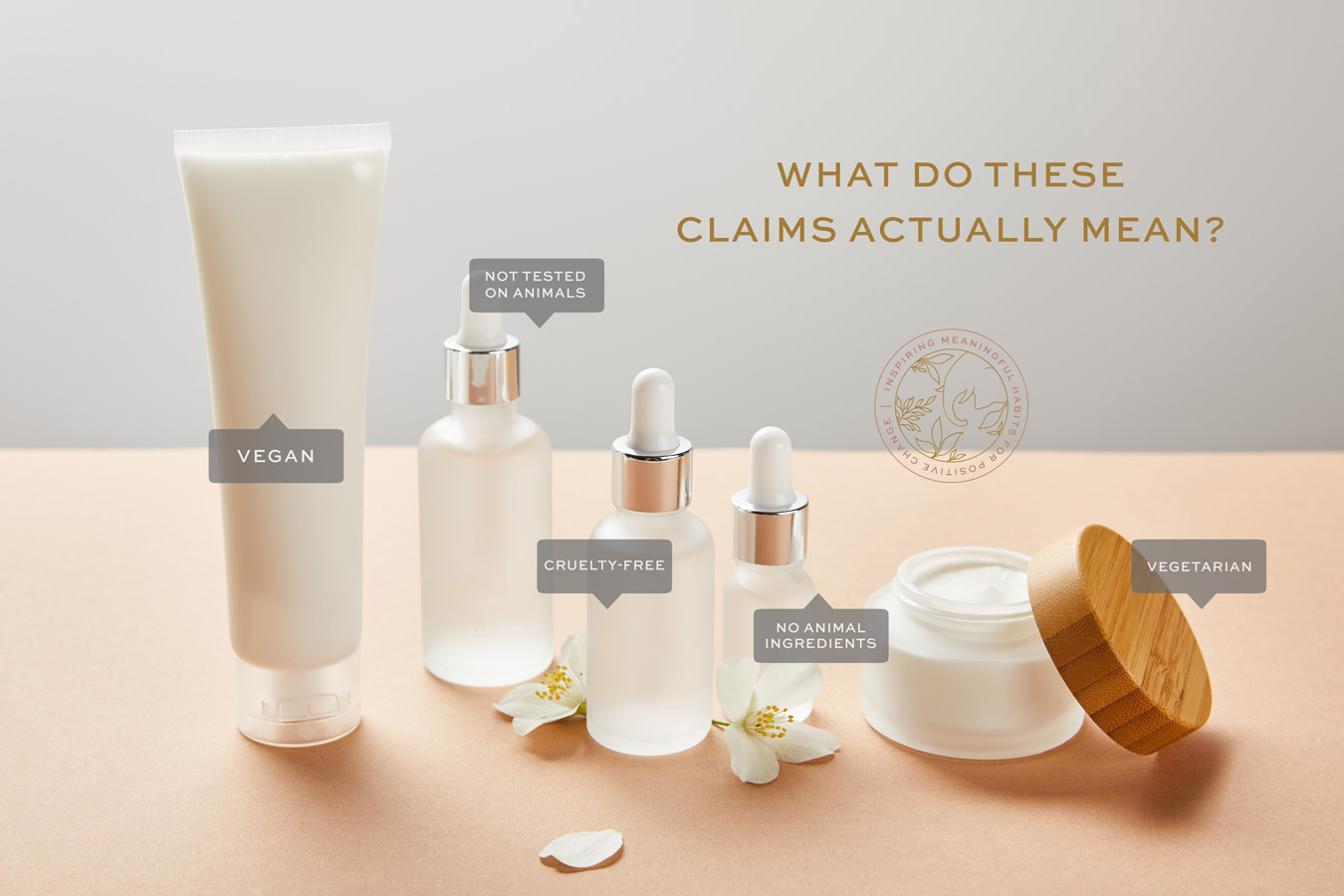
Did you know there’s a difference between cosmetics labeled Cruelty-Free vs. Vegan? And Vegetarian vs. Vegan? And that not all Certified Cruelty-Free Bunny Logos have the same standards and criteria?
In this post, I’m sharing some of the most common cruelty-free and vegan claims, labels, and logos that we often see on cosmetics and household cleaning products. As well as, providing an overview of which ones are regulated, the organizations issuing these certifications, their requirements, and the cost associated with licensing their logos.
And because no certification or standard is perfect or all-inclusive, I’ll also be sharing some things to look out for. That way, we can set some realistic expectations when we shop for cruelty-free and vegan cosmetics.
By the end of this post, you’ll have a better understanding of what each cruelty-free and vegan claim actually means, and hopefully, it’ll help you make better and informed consumer choices.
Cruelty-Free And Vegan Certifications and Claims
Let’s begin with some standard marketing claims that we often see on cosmetics like “our products don’t contain animal ingredients,” “we are cruelty-free,” “all of our products are vegan-friendly,” or “suitable for vegetarians.”
“No Animal Ingredients”
Overview:
What does it mean? This product does not contain any animal-derived ingredients.
Who certifies it? No one regulates the use of this label, and there is no legal definition. Anyone can label their products “No Animal Ingredients,” and mean whatever they want.
What to Look Out For:
- No standard definition results in companies coming up with their own definitions. Some may not consider “animal ingredients” to include honey, beeswax, lanolin, carmine, pearl, or silk derivatives.
- No mention of animal testing
“Cruelty-Free”
Overview:
What does it mean? This product and its ingredients were not tested on animals.
Who certifies it? No one regulates the use of this label, and there is no legal definition. Anyone can label their products “Cruelty-Free,” and mean whatever they want.
What to Look Out For:
- No standard definition results in companies coming up with their own definitions. Some may say we don’t test on animals, but they’re having others test on their behalf.
- No mention of whether animal-derived ingredients or by-products are used and if it’s vegan
“100% Vegetarian”
Overview:
What does it mean? This product does not contain animal ingredients resulting from slaughter.
Who certifies it? No one regulates the use of this label, and there is no legal definition. Anyone can label their products “Vegetarian,” and mean whatever they want.
What to Look Out For:
- No standard definition results in companies coming up with their own definitions. And it’s not always easy to identify which ingredients are considered vegetarian but not vegan and vice versa.
- No mention of animal testing
“100% Vegan”
Overview:
What does it mean? This product does not contain animal-derived ingredients or animal by-products.
Who certifies it? No one regulates the use of this label, and there is no legal definition. Anyone can label their products “Vegan,” and mean whatever they want.
What to Look Out For:
- No standard definition results in companies coming up with their own definitions. Some may not consider “animal-derived ingredients” to include pearl, silk, or carmine.
- No mention of animal testing
The main issue with these unregulated cruelty-free and vegan marketing claims is that there is no standard definition of what they truly mean. So it’s entirely up to companies to define these labels themselves. And no one else is substantiating these claims but the same people who are trying to sell us their products.
Use of Unregulated Labels
But just because a company uses one of the unregulated labels doesn’t necessarily mean that they’re trying to mislead or deceive us. It just requires us to be more vigilant and to do our research to find out exactly what the company means when they call their products cruelty-free, vegetarian, or vegan.
I like to email or message the company directly to ask. And if I ever feel like they’re dodging my questions or giving me a generic response, I will reconsider buying from them. I’d rather support another company that is more transparent about its ingredients and policies.
Cruelty-Free & Vegan Certifications
Now let’s look into some common cruelty-free and vegan certifications found on cosmetics and household cleaning products. These certifications are different from the above marketing claims and statements because there is a third party verifying these claims.

Overview:
What does it mean? The brand has verified that they and their suppliers do not conduct, commission, pay for, or allow any tests on animals for their ingredients, formulations, or finished products anywhere in the world and that they will never do so in the future. Learn More.
Who certifies it? PETA
What is required? Brands must fill out a questionnaire and submit a statement of assurance signed by the CEO.
What’s the cost? Free but if companies want to use and license the cruelty-free bunny logo, it costs $350
What to Look Out For:
- PETA does not conduct routine audits to ensure compliance
- PETA does not require documentation from suppliers, and only require brands to have language in place with their suppliers
- Therefore the legitimacy of PETA’s standards depends on the honesty and accuracy of written statements made by the brand.
- PETA’s standards are less strict compared to other third-party cruelty-free certifications, see here for comparison.
- This does not mean the product is vegan

Overview:
Who certifies it? Choose Cruelty Free (CCF)
June 1, 2021 Update! Choose Cruelty Free will now be joining Cruelty Free International & Leaping Bunny (see below)
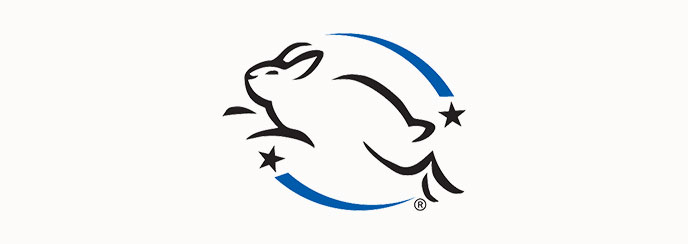
Overview:
What does it mean? The company does not conduct or commission animal testing on any of its products, formulations, or ingredients. The company also does not purchase any ingredients, formulations, or products from any third party manufactuers or suppliers that test on animals.
What is required? Brands must meet the Standard set by Leaping Bunny which also includes implementing a Supplier Monitoring System where brands must agree to an independent audit. Brands must also recommit annually.
Who certifies it? Leaping Bunny through CCIC or Cruelty Free International
What’s the cost? Free to apply via CCIC but CFI requires a fee. And if companies want to use and license the cruelty-free bunny logo, the licensing fee is based on the company’s gross annual sales.
What to Look Out For:
Leaping Bunny does not have any restrictions on the use of animal ingredients therefore some LB certified brands are not vegan.
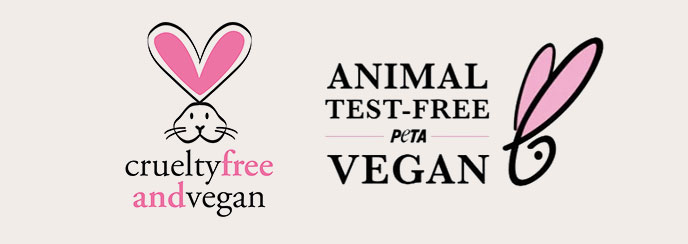
Overview:
What does it mean? Brands whose entire product line is free of animal-derived ingredients. As well as, brands that have verified that they and their suppliers do not conduct, commission, pay for, or allow any tests on animals for their ingredients, formulations, or finished products anywhere in the world. Learn More.
Who certifies it? PETA
What is required? Brands must fill out a questionnaire and submit a statement of assurance signed by the CEO.
What’s the cost? Free but if companies want to use and license the cruelty-free bunny logo, it costs $350
What to Look Out For:
- PETA does not conduct routine audits to ensure compliance
- PETA does not require documentation on each ingredient to verify they are both not animal-derived or animal-tested
- Therefore the legitimacy of PETA’s standards depends on the honesty and accuracy of written statements made by the brand.
- PETA’s standards are less strict compared to other third-party cruelty-free certifications, see here for comparison.

Overview:
What does it mean? This product does not contain animal products or by-products and has not been tested on animals. Learn More.
Who certifies it? Vegan Action
What is required? Documentation on each ingredient must be provided to show it is both not animal-derived and not tested on animals since the year 2000. After a 12-month period, approved products will be reviewed and an updated agreement is required.
What to Look Out For:
- Vegan Action may contact suppliers and manufacturers but they do not conduct or commission independent audits to ensure compliance
- Therefore the legitimacy of Vegan Action’s standards depends on the honesty and accuracy of written statements made by the brand and its suppliers
What’s the cost? $100 and the annual licensing fee is based on the company’s annual revenue from the previous fiscal year.
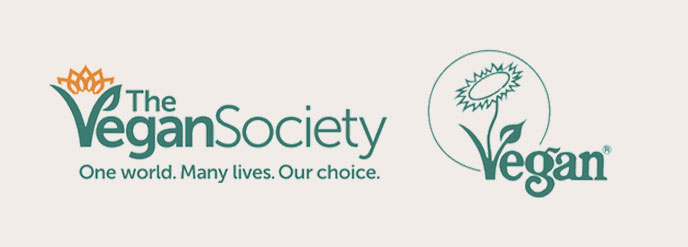
Overview:
What does it mean? This product does not contain any animal product, by-product, or derivative. And the product and its ingredients do not involve testing of any sort on animals conducted at the initiative of the company or on its behalf or by parties over whom the company has effective control. Learn More.
Who certifies it? The Vegan Society
What is required? Company must provide signed written statements by the manufacturer proving they meet the criteria.
What to Look Out For:
- Vegan Society requires on-site audits for certified restaurant dishes, but it’s unclear if they conduct or commission independent audits for cosmetics and household cleaning products.
- Therefore the legitimacy of The Vegan Society’s standards depends on the honesty and accuracy of written statements made by the brand and its suppliers & manufacturers.
What’s the cost? They do not specify their application costs or licensing fees but state they have a variety of fee structures.
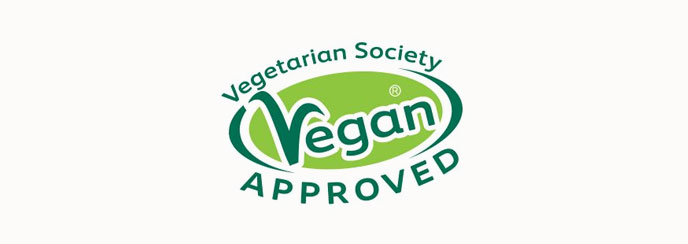
Overview:
What does it mean? This product is free from animal-derived ingredients, no animal testing is carried out or commissioned, no cross-contamination during production, and is GMO-free.
Who certifies it? The Vegetarian Society
What is required? Products must meet their strict criteria where they check ingredient lists and specification sheets. A review of documentation relating to production processes to check for the risk of cross-contamination is also required. This can also include visits to production sites. Learn More.
What to Look Out For:
- They have two trademark logos, one for Vegetarian products and another for Vegan products. The criteria for Vegetarian approved products states it must be free from any ingredient resulting from slaughter.
What’s the cost? I couldn’t find any information on their application costs or licensing fees.
As you can tell, not all cruelty-free and vegan certifications or claims are the same. Each has its own set of standards and criteria. And there isn’t one certification that is universally better than the others.
Additionally, these are only some of the most popular claims and certifications you’ll find on cosmetics and household cleaning products in the US and Canada. There are more vegan-certifying organizations around the world. So be sure to check the standards of all cruelty-free and vegan third-party certifications to ensure their standards are credible and trustworthy.
I hope you found this post explaining all of the various cruelty-free and vegan claims and labels for cosmetics to be helpful. Feel free to reach out at any time if you ever have any questions!







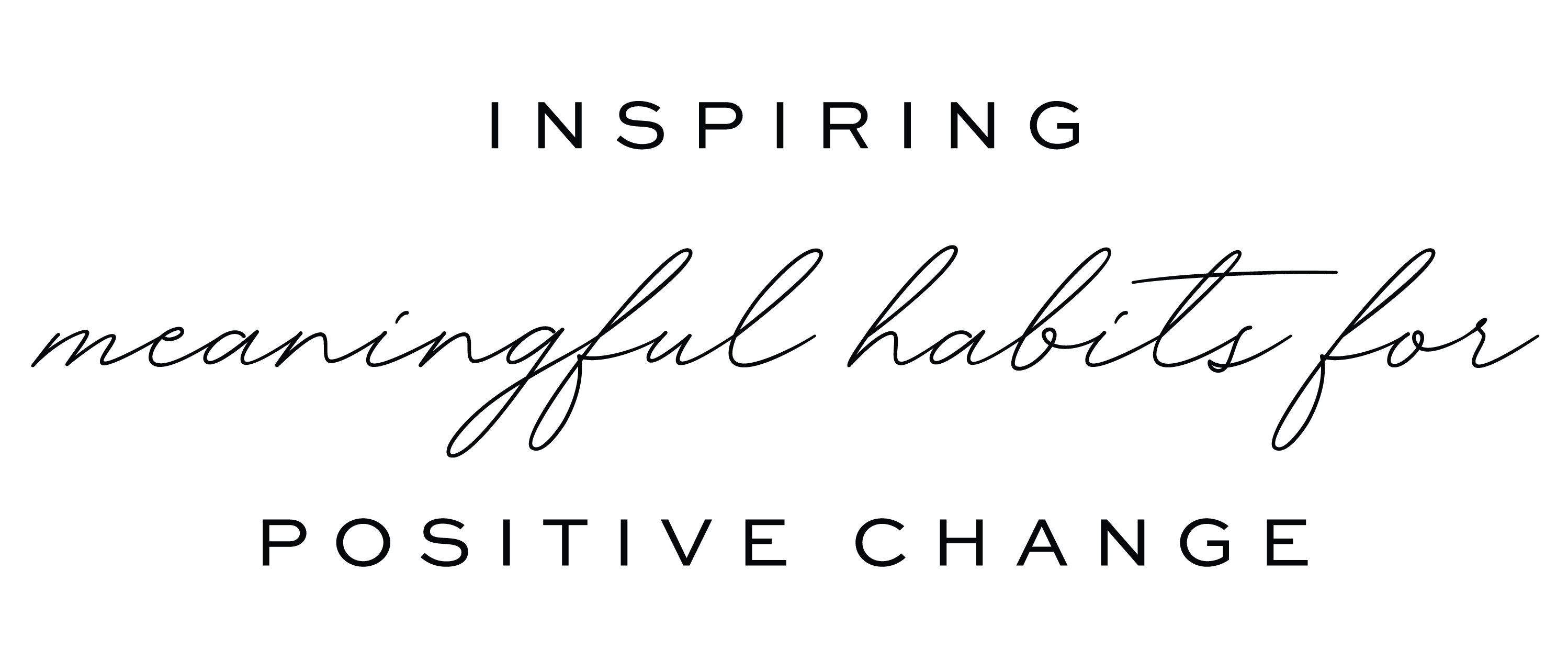
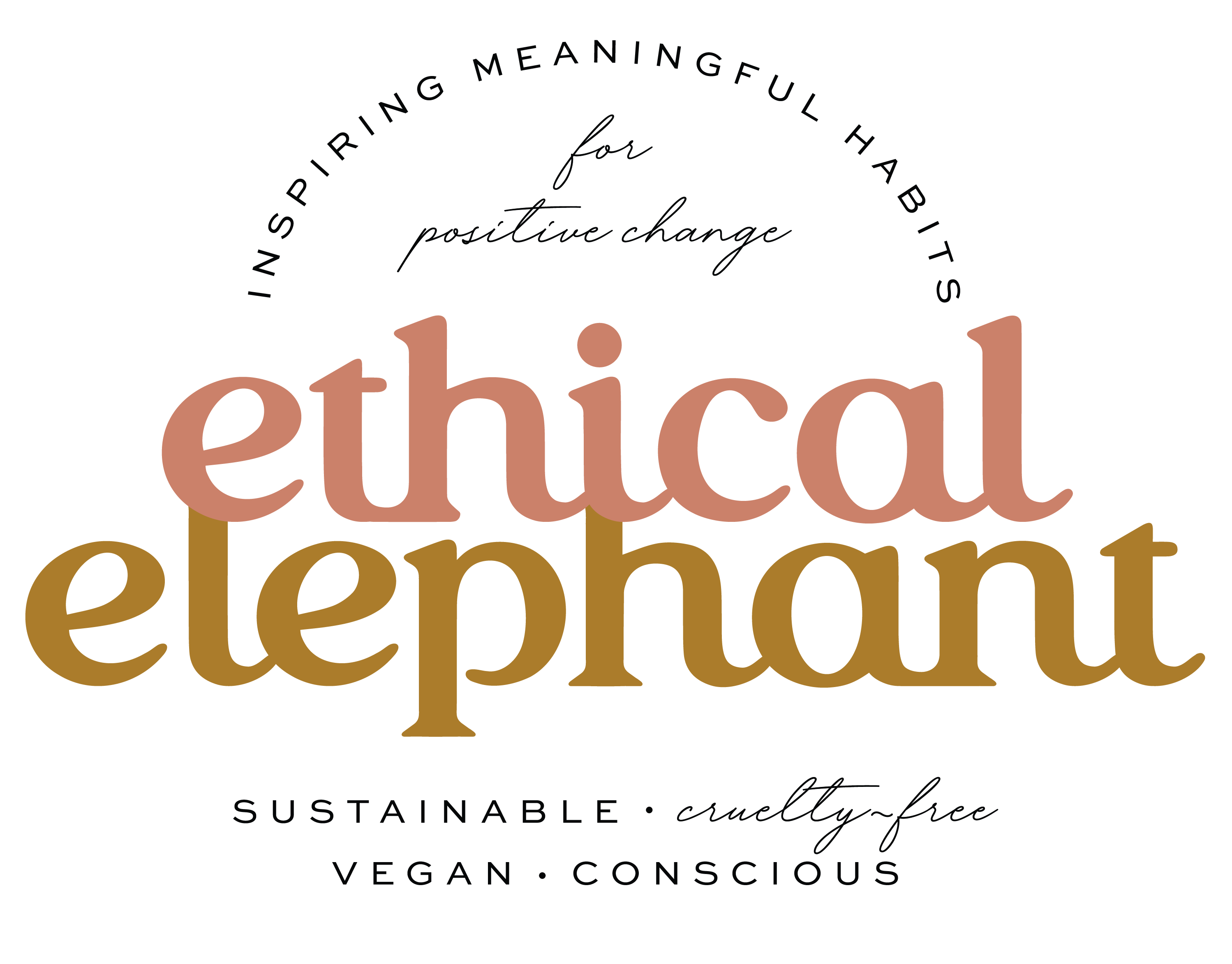
10 thoughts on “Cruelty-Free and Vegan Cosmetics Certifications & Claims Explained”
BeVeg vegan certification is a trusted and leading global vegan trademark.
Wow! Very informative!
so the difference between resting bunny and leaping bunny is the number of animals used in testing??? resting bunny has never EVER (nowhere in any of the research and development of product had any affiliation with animal testing) whereas the leaping bunny CAN ANIMAL TEST
during research and development but does not test on finished product??
excuse this ignoramus but isn’t most animal cruelty at the research and development stage?
what is the benefit to a company to continue animal testing on a product already finished (and presumably marketed)??
Thanks, great writeup!